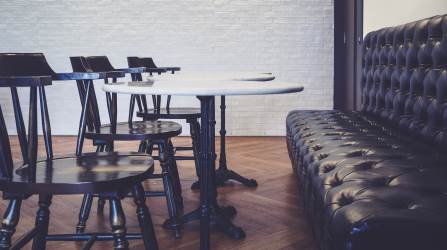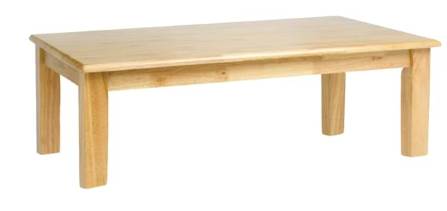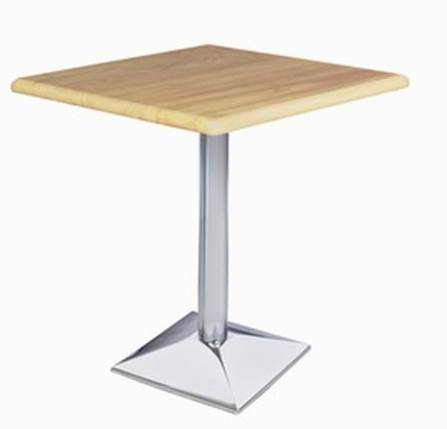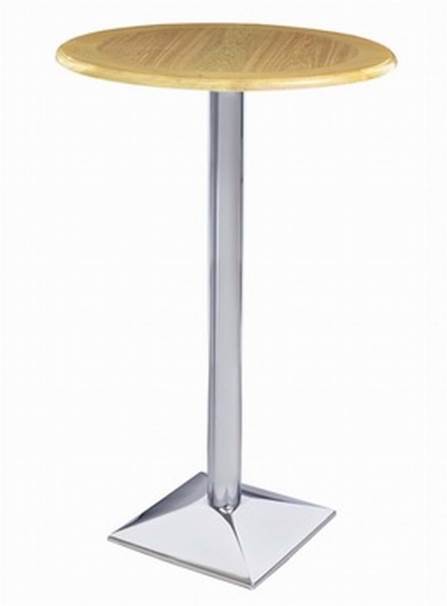
Bar tables are part of British history. We've been drinking in pubs and bars for around 2,000 years, ever since the Romans introduced the taberna, or tavern, to these shores. It’s also from the Romans that we get the word “table”, or “tabula” in Latin, which means, among other things, “plank”.
And that’s exactly what a bar table would have been in the earliest pubs and inns: a simple wooden plank or board, supported by trestles or perhaps blocks of stone, and later barrels, on which food and drink would be placed. Over the centuries, the bar or pub table has evolved into a multifaceted creature: it has grown legs, it now comes in various heights and materials, and is highly mobile.
So, if you run a bar or a pub and are thinking about bar or pub tables, this last point is perhaps the first thing you should bear in mind: how flexible do you want your layout to be? On the one hand, customers are generally resistant to change; they might have a favourite seat or corner in your bar, so if they arrive one day to find that it’s been moved, they will not be happy. On the other hand, you might want to change your furniture layout to cater for different events or even for different times of day (lunchtime and evening, for instance). The answer might be to have a kind of “skeleton” layout of seats and tables in settled positions, with the rest of the space given over to more flexible furniture.
Bar table styles and finishes
Which brings us to the question of styles. If yours is a contemporary-looking bar, then it would be best to continue this theme with your tables and chairs, using the bright, clean-looking chrome and metal finishes and laminates now widely available. But often it’s better to mix things up, with perhaps a more traditional-looking sofa and a low table in the corner or against the wall where drinkers can sit and linger; regular-height tables and chairs in another part of the space; and the rest of the room given over to high “poseur” tables and high stools. These higher tables are ideal for small groups who might just be popping in for a quick drink. Another factor to bear in mind is that if space is limited, tables with rounded rather than square edges make it easier for customers to move around without banging their legs or catching their clothes or bag straps on table corners.
Once you’ve thought about the big picture, it’s time to get down to specifics. It’s best to go through the different types of table in order of height, beginning with the lowest. Prices for these tables from Trent Furniture range from around £50 for a small coffee table (excluding VAT) to around £96 (exc. VAT) for an Art Deco poseur table in silver finish.
Starting low
Low tables are generally referred to as “coffee tables”, although they are of course fully capable of supporting all kinds of drinks. Although their use in bars is not widespread, they are sometimes used along with a sofa or chairs in a corner or against a wall; if seating is low, then a table will clearly need to be low, too. Coffee tables are more often made or finished in wood, such as Trent Furniture’s Shaker coffee table (in various finishes) or Farmhouse square coffee table (in dark oak or light oak finishes). These will generally measure around 45-48cm in height.

A more contemporary look comes with the Pyramid coffee table, so called because it has a pyramid-shaped base (which is wide, to ensure stability). These are almost always contemporary in design, materials and finish: chrome, powder-coated metal, laminates, light wood veneers. Trent Furniture’s Pyramid coffee tables are square or rectangular, with the base made from steel and the tops in either wood veneer or laminate.

The next stage
It’s likely, though, that your bar will mostly use tables of a regular “dining” height of around 68-70cm. Trent Furniture’s Art Deco pedestal table will accommodate a small group of customers. It weighs around 20kg, making it extremely sturdy and stable, but not so heavy that it can’t be moved around as required.
The difference between a bar and a pub is not clear-cut, and therefore it’s not easy to say what constitutes “bar furniture” as opposed to “pub furniture”. Often they will cross over. But it’s true that bars tend to be furnished and decorated in a somewhat less traditional style than pubs. So tables such as Trent Furniture’s Pyramid tables or Pedestal Tables would be a good choice for a bar, rather than the more traditional-looking ornate cast-iron tables and seating. Pyramid tables would work well alongside Trent Furniture’s Small Dakota bar stool, or one of its simple wooden stools with either wooden tops or button (ie, cushioned) tops. Alternatively, simple designs such as the Bistro Table or the Frame Table offer an unobtrusively stylish option. A clever way of using wall space is to put a banquette or bench seat up against the wall, with chairs facing it, and tables in between.
What is a Tall Table Called?
A tall table is also known as a poseur table, and is a very common design for a commercial settings.
This is the kind of furniture that’s found almost exclusively in bars. If your bar has poseur tables or a counter where people sit, then high bar stools are essential. There’s something very American about sitting on a high stool at the bar, catching the bartender’s eye when your drink needs refreshing, and perhaps catching the eye of a fellow drinker. For a stylish, contemporary look, Trent Furniture’s Tall Zeta chrome bar stool (seat height 80cm), with its elegant curves, or the Monza bar stool (seat height 75cm) with metal frame and pressed plywood seat, are ideal.
Groups of customers may want to cluster around a high “poseur” table, and there are numerous stools that would fit this set-up. The Tall Dakota bar stool (from £38.90) is solid and unobtrusively stylish, with a chunky design and a cushioned leather top. This would look good with one of Trent’s Pyramid poseur tables, either in black or chrome. A more decorative, but still modern design the Shaker poseur table, which comes in the same range of wood finishes.

People come to bars for different reasons: sometimes for a quick drink and a chat before moving on, sometimes for a date, sometimes to meet up with a group of friends for the whole evening. If space is sufficient, a well-furnished bar will be able to cater for all these needs: poseur chairs and tables for the first, smaller tables with more comfortable chairs for the second, larger tables with comfortable chairs or perhaps even sofas and low coffee tables for the third. Trent Furniture has many more options than the ones listed here. But the key to furnishing a bar is that it’s more than a question of simply going out and buying a job-lot of functional chairs and tables. By putting thought and care into it, you’ll end up with a proper bar – and customers who keep returning.
More about bar furniture
If you want to learn more about bar furniture, read our guide to bar stools or check out Trent Furniture's full range of bar furniture available to buy online today.